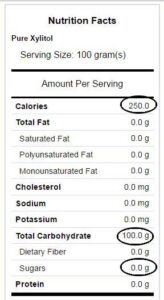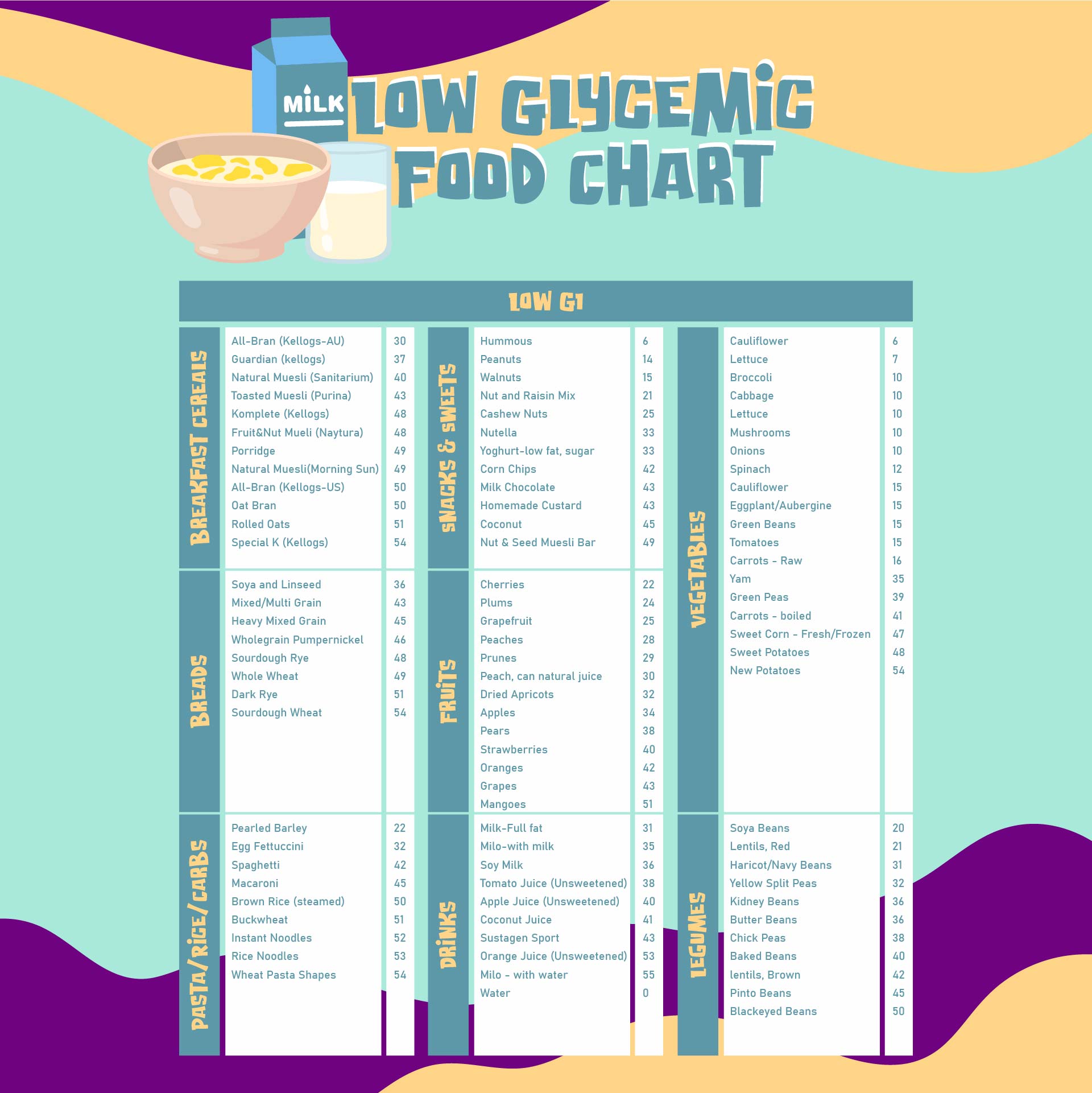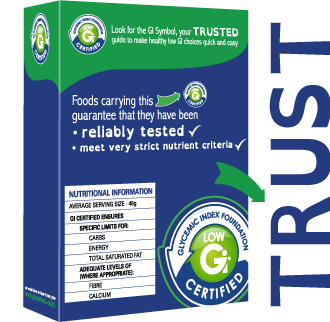39 calculate glycemic index food labels
Amazon.com : NOW Foods, Erythritol, Great-Tasting Sugar ... Life is sweeter when you replace sugar with NOW Real Food Erythritol in your favorite foods and beverages. Erythritol is a diabetic-friendly and keto-friendly sweetener known as a sugar alcohol that's about 70% as sweet as refined sugar. It has 95% fewer calories than sugar, a low glycemic impact, and it doesn't contribute to tooth decay. Glycemic Index Chart for Common Foods - Verywell Health Remember that a low GI is a food that won't raise your blood sugar as much as a food with a medium or high GI. 1. Low GI: 55 or less. Medium GI: 56 to 69. High GI: 70 to 100. For example, rice milk (a processed food without any fiber) has a high GI of 86, while brown rice (plenty of fiber) has a medium GI of 66.
Sourdough Bread & Blood Sugar | livestrong The glycemic index is a 100-point scale used to measure the effect of carbohydrate-rich foods on blood sugar levels. Foods that have a high glycemic index of greater than 70 on the scale may cause sudden and extreme spikes in blood sugar levels, while those with a glycemic index of 55 or less produce a more gradual increase.
Calculate glycemic index food labels
Glycemic Index: What It Is and How to Calculate It - Simple.life Blog Glycemic Load is a correction tool that gives you a more realistic picture of how food will influence your blood sugar. The formula looks like this: GL = (GI/100) x (net grams of planned carbohydrate) This calculation is a combination of portion size and glycemic index to give you a clearer picture of how the food will impact your blood sugar. SELF Nutrition Data | Food Facts, Information & Calorie ... Nutrition Data’s patent-pending Estimated Glycemic Load™ (eGL) is available for every food in the database as well as custom foods and recipes. How to interpret the values: Experts vary on their recommendations for what your total glycemic load should be each day. A typical target for total Estimated Glycemic Load is 100 or less per day. How to Calculate Glycemic Load: 10 Steps (with Pictures) - wikiHow Health Then, divide the result by 100 to find the glycemic load. [8] For example, tomatoes have a GI of 38 (low). [9] 1 cup (149 g) of cherry tomatoes has 5.79 g of carbohydrates. Your tomatoes have a GL of 2.202: Method 2 Using Glycemic Load to Manage Your Diet 1 List the foods you eat on a regular basis.
Calculate glycemic index food labels. Glycemic Index: How to Determine High vs Low Glycemic Foods - WebMD Look for the glycemic index on the labels of packaged foods. You can also find glycemic index lists for common foods on the Internet. Oregon State University has one with more than 100. Or ask ... Amazon.com : Organic Yacon Syrup by Alovitox | Natural ... *ÓYacon Syrup, scores best in the Glycemic Index for Sweeteners that are sugar based. It derives it's sweetness from Fructo-oligosaccharides, a type of sugar with a very low GI. It is probably the only truly raw, organic, natural, low calorie, and low glycemic sweetener available.Ó Yacon syrup is a healthy, low-calorie sweetener, not a ... Carbohydrates on a Keto or Low-Carb Diet – Diet Doctor Jun 17, 2022 · Maltitol, the most common sugar alcohol in packaged low-carb treats, has the highest glycemic index and insulin index of all sugar alcohols, and approximately 50% is absorbed in the digestive tract: Nutrition Research Reviews 2003: Health potential of polyols as sugar replacers, with emphasis on low glycaemic properties [overview article ... PDF Glycemic Index Food Guide - Diabetes Canada Additional foods: 1. 2. 3. Lentil Soup (ready-made) Split Pea Soup (ready-made) Additional foods: 1. 2. 3. Additional foods: 1. 2. 3. Milk, Alternatives and Other Beverages Low Glycemic Index (55 or less) Choose Most Often Medium Glycemic Index (56 to 69) Choose Less Often High Glycemic Index (70 or more) Choose Least Often Almond Milk Cow Milk ...
How to Calculate Glycemic Load - dummies 72 x 36 = 2,592 / 100 = 26 glycemic load To find the amount of available carbohydrates in packaged foods, simply check the nutrition facts label. Figuring out what the numbers mean Knowing how to calculate the glycemic load of a food is great, but it's not quite enough. The end measurement is what's most important to know. Glycemic Index - Diabetes Australia Low GI foods are foods with a GI less than 55. Intermediate GI foods are foods with a GI between 55 and 70. High GI foods are foods with a GI greater than 70. The recommendation is to eat more low and intermediate GI foods, not to exclude high GI foods. The GI is only a small part of the healthy eating plan for people with diabetes. Glycemic Index (GI) Calculator - Free Online Calc Calculate Glycemic Index (GI) for Selected Food: -Low (GI) Food has a rating of 55 or less. -Medium (GI) Food has a rating of 56-69. -High (GI) Food has a rating of 70 or more. Glycemic Index Calculator - Which Foods are High on GI Index? By ShapeFit Fitness Calculators The glycemic index (GI) is a scale which ranks carbohydrate based foods based on how they affect blood glucose levels, by comparing them to glucose. The glycemic index measures how much your blood sugar level increases after eating certain foods. Result Glycemic Index for Selected Food : JOIN OUR NEWSLETTER
Learn to Calculate Glycemic Index | Bauman College The math is simple. To assess how a packaged food will affect your blood sugar, find the carbohydrate number in the label, subtract the grams of fiber and sugar alcohols. Your result will be the grams of digestible carbohydrates. The higher the number the bigger the effect on blood glucose. carbohydrate - grams of fiber (and sugar alcohols) = Glycemic Index - Glycemic Index Research and GI News Complete with data for Glycemic Index, Glycemic Load, serving size, direct references to the studies used to CALCULATE the VALUES, and more! ... Glycemic Index Research Service (SUGiRS). We are an established commercial GI testing laboratory, where we test foods for their glycemic index, insulin index, satiety response, and other metabolic ... Food Labels | CDC - Centers for Disease Control and Prevention Check the Serving size first. All the numbers on this label are for a 2/3-cup serving. This package has 8 servings. If you eat the whole thing, you are eating 8 times the amount of calories, carbs, fat, etc., shown on the label. Total Carbohydrate shows you types of carbs in the food, including sugar and fiber. What are Glycemic Index and Glycemic Load - Bel Marra Health Your food labels provide a lot of information, but two vital categories - glycemic index and glycemic load - should be more closely examined. FREE SHIPPING ON Orders OVER $59+ Call Us:1-866 ...
Glycemic Index Calculator The Glycemic Index (GI) is a scale from 0 to 100 that corresponds to how much a carbohydrate raises a person's blood sugar level by after eating. Pure glucose is given a value of 100, which represents the relative rise in the person's blood glucose level two hours after consuming it.
How to Read Nutrition Labels for Low-Glycemic Shopping Although nutrition facts labels include data on total carbohydrates and sugars, that doesn't give you much to go on as far as glycemic load. To determine that, you really need to know what the food is made up of. For instance, if you find whole-grain bread, you need to know what grain was used to make it — wheat, oats, or millet.
Carb counting for diabetes: How to count and use the glycemic index The first step in carb counting is identifying which foods contain carbohydrates and how rapidly these carbohydrates will boost blood sugar levels. People can use a system called the Glycemic ...
How to Calculate Glycemic Index The result you obtained You can determine this by dividing the total gram of carbs with each component's grams inside the meal. For instance, if we consider the same previous example, then a meal with orange juice and oatmeal's has 48g of carbs. You can divide the carbs in each (orange juice and then oatmeal separately) with 48g of carbs.
How to calculate the glycemic index from a nutrition label - Quora The glycemic index is a number that gives people an idea of how quickly their body converts carbs in a food into glucose. Two foods with the same amount of carbohydrates may have varying glycemic index numbers. The lower the number, the less impact the food will have on the blood sugar. 55 or less = Low. 56- 69 = Medium. 70 or above = High.
Can One Tell Exactly what the Index List Is as simple as Studying a ... This can be a bit difficult, because food labels in the United States don't list a food's glycemic index score. You can, however, get an idea of which foods may have lower glycemic index scores by looking at the information on the label.Even though you can't find a food's glycemic index or load on its packaging, the ever-present nutrition facts label is a valuable tool for finding the ...
PDF Glycemic index and glycemic load for 100+ foods - OSU Extension Service The complete list of the glycemic index and glycemic load for more than 1,000 foods can be found in the article "International tables of glycemic index and glycemic load values: 2008" by Fiona S. Atkinson, Kaye Foster-Powell, and Jennie . rand -Miller in the December 2008 issue of Diabetes are, Vol. 31, number 12, pages 2281-2283.
How to calculate the glycemic index from food labels? After calculating the proportion of carbs, multiply it with the standard glycemic index of the components. You can easily locate the standard GI on the GI table. Now, add up the results of the components obtained in step 3 to have a total GI score. Conclusion - How to calculate the glycemic index from food labels?
How to Calculate the Glycemic Index | livestrong Multiply 0.46 by 83 to get 38.18. For the orange juice, multiply 0.54 by the GI of 46 to get 24.84. Step 4 Add the results of Step 3 together. In this example, add 38.18 and 24.84 to get the sum of 63.02, which is the total glycemic index of the meal. Things You'll Need Glycemic index table or database Calculator Pencil and paper Tip
Reading Food Labels | GI Foundation To find out which foods carry the GI Symbol click here. Health Star Rating System (HSR) This voluntary Australian Government front-of-pack labelling system rates the overall nutritional profile of packaged food, from ½ a star to 5 stars. The more stars, the healthier the choice. All GI Symbol products have a 3.5 star rating or higher.
How to Calculate the Glycemic Load of Your Meal: 11 Steps - wikiHow Find the glycemic load of the meal. Take the total glycemic value of the meal from step 7 and multiply it by the net carbs of the meal from the previous step and then divide your answer by 100. Example: 55.53 (GI value) * 39 (net carbs) = 2165.67 2165.67 / 100 = 21.66 (rounded) 11 All done! You now know the glycemic load of the meal.
Can I Tell What the Glycemic Index Is by Reading a Food Label? Carbohydrate Content The glycemic index score indicates how quickly and how much the carbohydrates in a food are likely to increase your blood sugar levels. Foods that have a higher carbohydrate content per serving will have more of an effect on blood sugar levels than those with only a small amount of carbohydrates.
Prediabetes Diet | Meal Plan, Food to Eat & Avoid | PDF Glycemic Index vs. Glycemic Load. For example, watermelon has a high Glycemic Index value (80), but a Glycemic Load of only 5 because the food has relatively little carbohydrates. You can calculate a food's glycemic load by multiplying the per-serving carbohydrate level by the glycemic index and dividing by 100. Above 20 is high, 11 to 19 is ...
Low GI Explained | GI Foundation However, because glucose (glycemic) responses vary markedly from day-to-day for all sorts of reasons, it is almost impossible for you to work out the GI of a food. The GI is the average glycemic response (GR) elicited by a portion of food containing 50 g of available carbohydrate expressed as a percentage of the GR elicited by 50 grams of the ...
What Is Glycemic Index? - Academy of Nutrition and Dietetics The glycemic index, simply put, is a measure of how quickly a food causes our blood sugar levels to rise. The measure ranks food on a scale of zero to 100. Foods with a high glycemic index, or GI, are quickly digested and absorbed, causing a rapid rise in blood sugar. These foods that rank high on the GI scale are often — but not always ...
Glycemic Index Calculator It is based on an elaborated database containing glycemic values for aliments in various categories: fruits, vegetables, legumes, nuts, grains, pasta, bread, bakery products, dairy, meals, sugar types, treats and beverages. All you have to do is browse through each of the categories and test for the aliments you are interested in.
Glycemic Index Chart | Free Glycemic Index Food List The standardized Glycemic Index ranges from 0 to 100. Zero-glycemic foods—those without carbohydrates—include items like meats, fish, and oils. Pure sugar has a glycemic index of 100. Low-glycemic foods have a glycemic load of 55 or lower and include most fruits and vegetables, beans, dairy, and some grains. Foods such as bananas, raisins ...
How to Calculate Glycemic Load: 10 Steps (with Pictures) - wikiHow Health Then, divide the result by 100 to find the glycemic load. [8] For example, tomatoes have a GI of 38 (low). [9] 1 cup (149 g) of cherry tomatoes has 5.79 g of carbohydrates. Your tomatoes have a GL of 2.202: Method 2 Using Glycemic Load to Manage Your Diet 1 List the foods you eat on a regular basis.
SELF Nutrition Data | Food Facts, Information & Calorie ... Nutrition Data’s patent-pending Estimated Glycemic Load™ (eGL) is available for every food in the database as well as custom foods and recipes. How to interpret the values: Experts vary on their recommendations for what your total glycemic load should be each day. A typical target for total Estimated Glycemic Load is 100 or less per day.
Glycemic Index: What It Is and How to Calculate It - Simple.life Blog Glycemic Load is a correction tool that gives you a more realistic picture of how food will influence your blood sugar. The formula looks like this: GL = (GI/100) x (net grams of planned carbohydrate) This calculation is a combination of portion size and glycemic index to give you a clearer picture of how the food will impact your blood sugar.




































Post a Comment for "39 calculate glycemic index food labels"